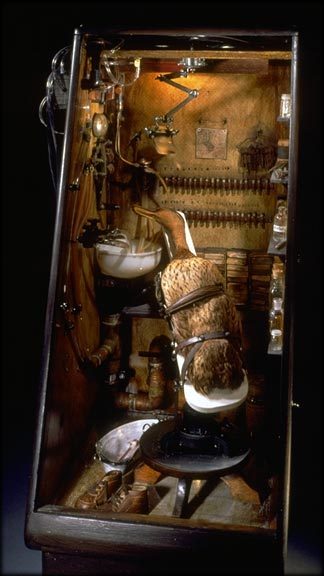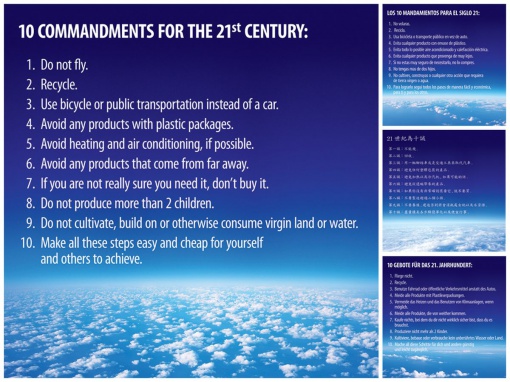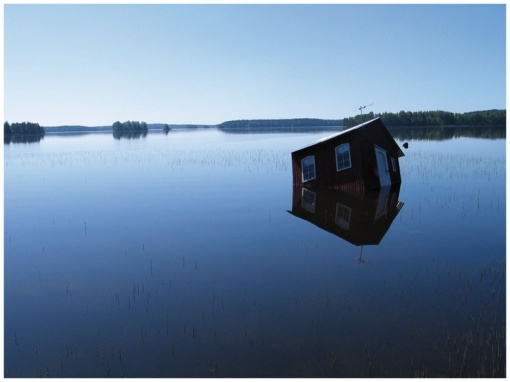For project 2, my artists I chose to research are Future Farmers, and Alexis Rockman.
Future Farmers is a group of artists that currently has 6 members that are all multi-disciplinary and collaborate on certain projects. Not all members work at the same time, they base their pieces off a specific combo of artists that they think would best showcase the project. Their key is working locally, and creating works that have to do with a site specific issue. A lot of the work is functional...I.e. “Seed Journey” which is an actual sea-faring vessel. They use a lot of raw materials, such as unfinished wood, rope, clear glass, grasses, etc. which create an overall earthy and raw vibe. Much of their work is also performance based. Showcase work: “Flatbread Society” 2012. In different locations for 6 years, experimented with fire, mobility and flatbread recipes. Has the frame of a canoe.
http://www.delfinafoundation.com/platform/the-politics-of-food-flatbread-society-seed-journey-with-amy-franceschini/
https://www.sfmoma.org/watch/the-futurefarmers-on-picnics-and-powers-of-ten/
Alexis Rockman takes a different approach than Future Farmers, but I was very interested nonetheless. He is primarily a painter, and is based out of New York. His works are on the whimsical side, but in a darker, apocalyptic sort of way. He visually explores where the natural world combines with civilization. Many of his works are very large in scale and abstract, to create visual drama about his views of the natural world.
Wednesday, February 19, 2020
Ron Pippin
https://www.huffpost.com/entry/first-person-artist-ron-p_b_70940
A brief interview of Ron Pippin
"My work is often related to ideas about the relationship of Science, Art, and Nature. My scientific aesthetic is primarily drawn from the 19th Century, when, I feel, science still had a relationship to beautiful forms."
More articles highlighting his work.
https://www.wired.com/2007/06/the-museum-boxe/
https://atodmagazine.com/2012/11/19/ron-pippin-obsolete-exhibition-nov-2012/


Looking through his work, it had this steampunk, dark, mad-scientist type of feel that caught my eye. Everything was so intricately pieced together, it made me think about how placement, as well as the contents themselves, would be important aspects to consider for the next project.
Alexis Rockman
his website: http://alexisrockman.net/
https://www.honoringthefuture.org/climate-smarts/artist-to-know/alexis-rockman/

Alexis Rockman's work emphasizes the topic of climate change. His paintings are also greatly detailed, depicting numerous animals in a struggling environment. The artworks themselves are bright and colorful, almost fantasy-like but hold great meaning. I hope to create an effective message with the next project while keeping it playful or eye-catching in some way.
A brief interview of Ron Pippin
"My work is often related to ideas about the relationship of Science, Art, and Nature. My scientific aesthetic is primarily drawn from the 19th Century, when, I feel, science still had a relationship to beautiful forms."
More articles highlighting his work.
https://www.wired.com/2007/06/the-museum-boxe/
https://atodmagazine.com/2012/11/19/ron-pippin-obsolete-exhibition-nov-2012/


Looking through his work, it had this steampunk, dark, mad-scientist type of feel that caught my eye. Everything was so intricately pieced together, it made me think about how placement, as well as the contents themselves, would be important aspects to consider for the next project.
Alexis Rockman
his website: http://alexisrockman.net/
https://www.honoringthefuture.org/climate-smarts/artist-to-know/alexis-rockman/

Alexis Rockman's work emphasizes the topic of climate change. His paintings are also greatly detailed, depicting numerous animals in a struggling environment. The artworks themselves are bright and colorful, almost fantasy-like but hold great meaning. I hope to create an effective message with the next project while keeping it playful or eye-catching in some way.
Tuesday, February 18, 2020
Artist Post
Brandon Ballengee

Brandon Ballengee has a strong emphasis on biology within his work. While other eco-art seems to be quite aesthetic-based, Ballengee's work has a clear visual influence from science and biological research. His project The Ever Changing Tide really stood out to me as it displays both the art and biologic evidence together as part of the exhibit. This is important to me and my work moving forward because I really value the logistics and scientific evidence that go into a project, especially if it is meant to be activist in any way. Doing so creates a tangibility that I think is important for any eco artwork that is meant to provoke action.
https://www.youtube.com/watch?v=BCsfwFk1woY
Helen Mayer Harrison and Newton Harrison

Helen and Newton Harrison have a research-based art practice that tackles contemporary ecological issues. Many of their pieces, such as the Santa Fe Watershed exemplify the extent of their ability to research and create art within the same context. Specifically, the Santa Fe Watershed project used the gallery setting to display their various research efforts and results in proposing plans to improve the durability of the watershed. I feel like their practice relates to mine because it is very research-based, and chooses to show that research as part of the artwork rather than to disguise it or put it behind the scenes.
https://vimeo.com/49276657
Kim Abeles
https://vimeo.com/93505026
VALISES FOR CAMP GROUND: ARTS, CORRECTIONS AND FIRE MANAGEMENT IN THE SANTA MONICA MOUNTAINS
The mixed media valises are used by the National Park Service and County Fire Department to teach about fire prevention, national forests, and our relationship to nature. Abeles welded the substructures to create shapes like pine tree logs, a chain saw, and other fire fighting tools.
The artworks and creative programs are developed to explore new models in two core areas: increasing public awareness, engagement and responsible stewardship through the County’s wildfire management programs; and providing skills development and job readiness opportunities for incarcerated women through creative activities related to the Santa Monica Mountains.

Giuseppe Arcinboldo
.jpg!Large.jpg)
https://www.smithsonianmag.com/arts-culture/arcimboldos-feast-for-the-eyes-74732989/
Portrait painter for the Renaissance court during 1590's, went on to work for the royal family for more than 25 years.
The tone of his work is comical, yet highlights a sense of power of the royal family. During this time, much of the exotic elements displayed were being discovered in New Worlds.
Arcimboldo’s composites suggest a scientific fluency.“Every plant, every grass, every flower is recognizable from a scientific point of view,” says Lucia Tomasi Tongiorgi, an art historian at the University of Pisa.
Arcimboldo would remain rather obscure until the 20th century, when painters from Salvador Dali to Pablo Picasso are said to have rediscovered him. He has been hailed as the grandfather of Surrealism.
Artist Post
Tea Makipaa
- Tea is a Finnish artist born in 1973 who centers her work around the relationship between nature and technology and the impending ecological disaster. Tea works across mediums, using video, photography, installation, and sculpture to relay her message and open conversations. Tea states that because her methods are often extreme or outlandish a healthy level of confusion in viewers is welcomed. She states that often times her works are not initially seen as art, adding to the confusion, and hopefully starts conversations.



https://www.youtube.com/watch?v=9BuLW45koM8
Andy Goldsworthy
- Andy is a British artist born in 1965 who predominantly works as a sculptor and a photographer. Andy typically works on site - specific installations that focus on natural materials and the decay over time. Using rocks, twigs, leaves, and ice Andy creates structures and then continually photographs them through their natural course of deconstruction. He states that he is less concerned with the idea of it being art, and is more focused on the concept of life, and the fact that most things in life do not last forever but have a continued history.



https://www.youtube.com/watch?v=9DjCMqtJr0Q
Tea Makipaa
- Tea is a Finnish artist born in 1973 who centers her work around the relationship between nature and technology and the impending ecological disaster. Tea works across mediums, using video, photography, installation, and sculpture to relay her message and open conversations. Tea states that because her methods are often extreme or outlandish a healthy level of confusion in viewers is welcomed. She states that often times her works are not initially seen as art, adding to the confusion, and hopefully starts conversations.



https://www.youtube.com/watch?v=9BuLW45koM8
Andy Goldsworthy
- Andy is a British artist born in 1965 who predominantly works as a sculptor and a photographer. Andy typically works on site - specific installations that focus on natural materials and the decay over time. Using rocks, twigs, leaves, and ice Andy creates structures and then continually photographs them through their natural course of deconstruction. He states that he is less concerned with the idea of it being art, and is more focused on the concept of life, and the fact that most things in life do not last forever but have a continued history.



https://www.youtube.com/watch?v=9DjCMqtJr0Q
Monday, February 17, 2020
HELEN MAYER AND NEWTON HARRISON

The Harrison's TEDxSanta Cruz here
Harrisons Future Garden here and here
Working in tandem with botanists at the Arboretum--along with other artists, scientists, and students--the Harrisons have created trial gardens inside three refabricated geodesic domes, where native plant species are being exposed to the temperatures and water conditions that have been projected for the region in the near future.
The goal of the project is to determine which plants will thrive as the area warms due to climate change, and to cultivate those species to create the foundation for a more rapid regeneration of the local ecosystem while temperatures shift.
ALLAN McCOLLUM

Allan McCollum: "Lost Objects" and "Natural Copies" here
Episode #137: Filmed in his Brooklyn studio, artist Allan McCollum discusses two projects utilizing dinosaur fossils—"Lost Objects" (begun 1991) and "Natural Copies (begun 1994)—and his interest in how both scientific and local communities define the historical value of objects. Applying strategies of mass production to hand-made objects, Allan McCollum's labor-intensive practice questions the intrinsic value of the unique work of art. McCollum's installations—fields of vast numbers of small-scale works, systematically arranged—are the product of many tiny gestures, built up over time. Viewing his work often produces a sublime effect as one slowly realizes that the dizzying array of thousands of identical-looking shapes is, in fact, comprised of subtly different, distinct things. Engaging assistants, scientists, and local craftspeople in his process, McCollum embraces a collaborative and democratic form of creativity.
MARK DION

Mark Dion Interview "The Life of a Dead Tree" here
Artist Mark Dion brings a massive, fully grown, deceased tree, along with its inhabitants, to MOCA for the museum’s first summer exhibition in the Tower Automotive Building. This specially conceived project marks the 100th anniversary of the Tower Automotive building and brings attention to our role in observing and caring for Ontario’s natural ecosystems. Trees and forests have long populated Dion’s imagination and a particular body of production. He is well-known for artworks that question how we experience, study, display and think about the natural world. Through this particular project, a range of partners will be called upon to help expand the conversation and research being undertaken at MOCA. Dion states: “to build a culture of nature that features regeneration over destruction, sustainability over depletion and nurturing over domination, it requires input from a diverse collation of thinkers, makers, and doers. Art is one of many areas which can be important to this constellation.”
"Neukom Vivarium" here
Mark Dion "Phantom Museum" here
Tuesday, February 4, 2020
Robert Smithson Sites and Non-Sites
Subscribe to:
Comments (Atom)
I'd also like to share my Time-Lapse of plant growth that I made for my thesis exhibition. In order to allow the viewers to observe t...
-
Jae Rhim Lee video here more info here Here's a powerful provocation from artist Jae Rhim Lee. Can we commit our bodies to a c...
-
The Seed Artist video here The Seed Pioneers video here Let Seed Be Thy Medicine here A Day Without Seeds here The Seed Bank he...
-
Here is a video I found interesting mainly because it encompasses three of my favorite things: art, microbiology, and food. The body is an e...






